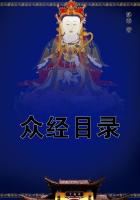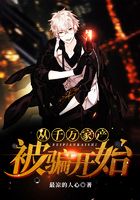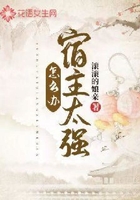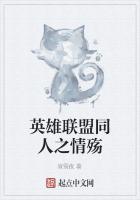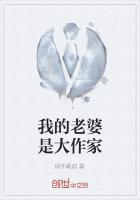Des Elzevier la Sphere me rend yure, Et la Sirene aussi m'esmeut. Grand cas Fais-je d'Estienne, Aide, ou Dolet. Mais Ias!
Le vieux Caxton ne se rencontre pas, Plus qu' agneau d'or parmi jetons de cuivre, En bouquinant!
Pour tout plaisir que l'on goute icy-bas La Grace a Dieu. Mieux vaut, sans altercas, Chasser bouquin: Nul mal n'en peult s'ensuivre.
Dr sus au livre: il est le grand appas.
Clair est le ciel. Amis, qui veut me suivre En bouquinant?
A. L.
第一章ILLUSTRATED BOOKS {8}({8} This chapter was written by Austin Dobson.--DP)
Modern English book-illustration--to which the present chapter is restricted -has no long or doubtful history, since to find its first beginnings, it is needless to go farther back than the last quarter of the eighteenth century. Not that "illustrated" books of a certain class were by any means unknown before that period. On the contrary, for many years previously, literature had boasted its "sculptures" of be-wigged and be-laurelled "worthies," its "prospects" and "land-skips," its phenomenal monsters and its "curious antiques." But, despite the couplet in the "Dunciad"respecting books where " . . . the pictures for the page atone, And Quarles is saved by beauties not his own;" -illustrations, in which the designer attempted the actual delineation of scenes or occurrences in the text, were certainly not common when Pope wrote, nor were they for some time afterwards either very numerous or very noteworthy. There are Hogarth's engravings to "Hudibras" and "Don Quixote;" there are the designs of his crony Frank Hayman to Theobald's "Shakespeare," to Milton, to Pope, to Cervantes; there are Pine's "Horace" and Sturt's "Prayer-Book" (in both of which text and ornament were alike engraved);there are the historical and topographical drawings of Sandby, Wale, and others; and yet--notwithstanding all these--it is with Bewick's cuts to Gay's "Fables" in 1779, and Stothard's plates to Harrison's "Novelist's Magazine" in 1780, that book-illustration by imaginative compositions really begins to flourish in England. Those little masterpieces of the Newcastle artist brought about a revival of wood-engraving which continues to this day; but engraving upon metal, as a means of decorating books, practically came to an end with the "Annuals" of thirty years ago. It will therefore be well to speak first of illustrations upon copper and steel.
Stothard, Blake, and Flaxman are the names that come freshest to memory in this connection. For a period of fifty years Stothard stands pre-eminent in illustrated literature. Measuring time by poets, he may be said to have lent something of his fancy and amenity to most of the writers from Cowper to Rogers. As a draughtsman he is undoubtedly weak: his figures are often limp and invertebrate, and his type of beauty insipid. Still, regarded as groups, the majority of his designs are exquisite, and he possessed one all-pervading and un-English quality--the quality of grace.
This is his dominant note. Nothing can be more seductive than the suave flow of his line, his feeling for costume, his gentle and chastened humour. Many of his women and children are models of purity and innocence. But he works at ease only within the limits of his special powers; he is happier in the pastoral and domestic than the heroic and supernatural, and his style is better fitted to the formal salutations of "Clarissa" and "Sir Charles Grandison,"than the rough horse-play of "Peregrine Pickle." Where Rowlandson would have revelled, Stothard would be awkward and constrained;where Blake would give us a new sensation, Stothard would be poor and mechanical. Nevertheless the gifts he possessed were thoroughly recognised in his own day, and brought him, if not riches, at least competence and honour. It is said that more than three thousand of his drawings have been engraved, and they are scattered through a hundred publications. Those to the "Pilgrim's Progress" and the poems of Rogers are commonly spoken of as his best, though he never excelled some of the old-fashioned plates (with their pretty borders in the style of Gravelot and the Frenchmen) to Richardson's novels, and such forgotten "classics" as "Joe Thompson", "Jessamy," "Betsy Thoughtless," and one or two others in Harrison's very miscellaneous collection.
Stothard was fortunate in his engravers. Besides James Heath, his best interpreter, Schiavonetti, Sharp, Finden, the Cookes, Bartolozzi, most of the fashionable translators into copper were busily employed upon his inventions. Among the rest was an artist of powers far greater than his own, although scarcely so happy in turning them to profitable account. The genius of William Blake was not a marketable commodity in the same way as Stothard's talent.
The one caught the trick of the time with his facile elegance; the other scorned to make any concessions, either in conception or execution, to the mere popularity of prettiness.

